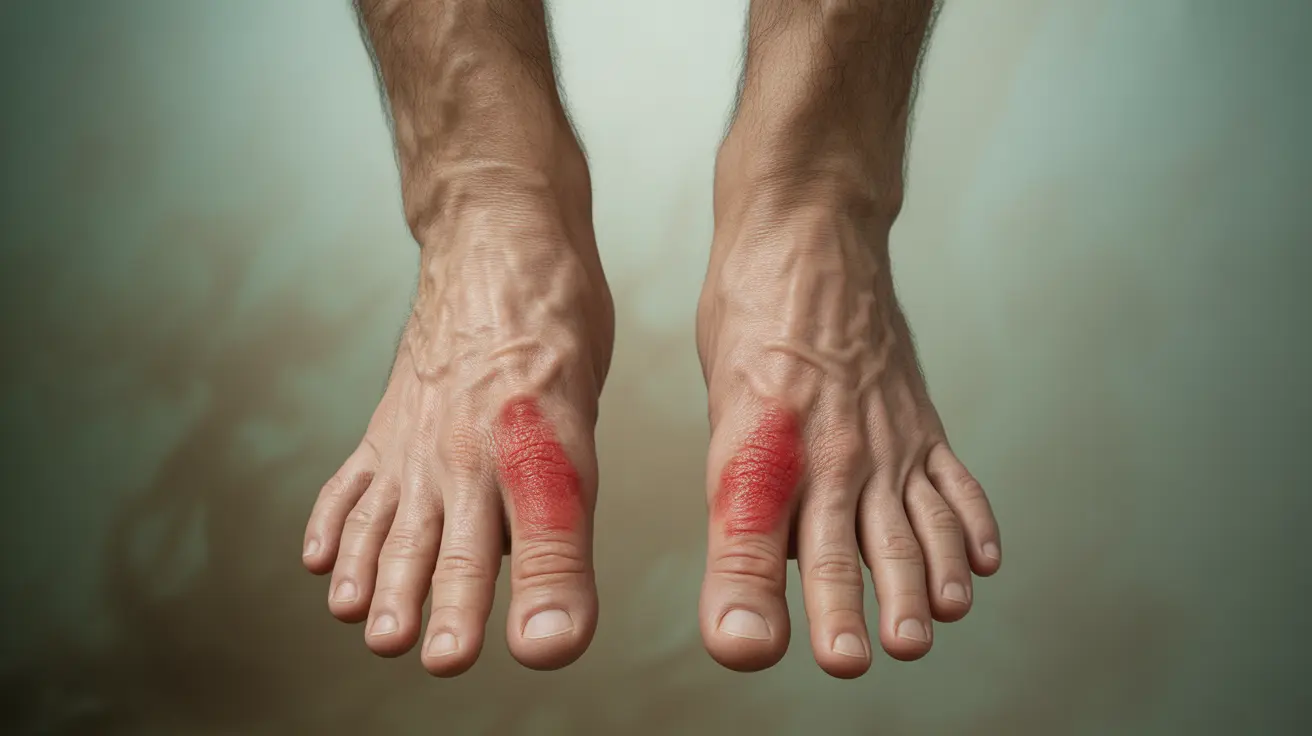Recognizing the early warning signs of psoriatic arthritis is crucial for getting timely treatment and managing this chronic inflammatory condition effectively. This autoimmune disease affects both the joints and skin, and early detection can help prevent long-term joint damage and improve quality of life.
Understanding these warning signs enables individuals, especially those with psoriasis, to seek medical attention promptly and begin appropriate treatment. Let's explore the key indicators and what you need to know about this condition.
Common Early Warning Signs
The initial symptoms of psoriatic arthritis can be subtle but typically include several characteristic signs:
Joint Pain and Swelling
One of the earliest and most common symptoms is joint pain and swelling, particularly in the fingers and toes. This can create a sausage-like appearance in these digits, a condition known as dactylitis. The pain may be accompanied by warmth and tenderness around affected joints.
Morning Stiffness
Many people experience significant joint stiffness, especially in the morning or after periods of inactivity. This stiffness can last for several hours and may improve with movement throughout the day.
Nail Changes
Changes in fingernails and toenails often precede or accompany joint symptoms. These changes may include:
- Pitting or small depressions in the nails
- Separation of the nail from the nail bed
- Changes in nail color or texture
- Thickening of the nails
The Connection Between Psoriasis and Psoriatic Arthritis
About 30% of people with psoriasis develop psoriatic arthritis. Understanding this connection is essential for early detection and treatment:
Skin Symptoms
Most people develop psoriasis before joint symptoms appear. Watch for red, scaly patches on the skin, particularly on the elbows, knees, scalp, and lower back. However, some individuals may develop joint symptoms first or simultaneously with skin symptoms.
Risk Factors
Several factors can increase the likelihood of developing psoriatic arthritis:
- Family history of psoriasis or psoriatic arthritis
- Having severe psoriasis
- Age (most common between 30-50 years)
- Obesity
- Previous joint injury
Impact on Daily Life
Early symptoms can significantly affect daily activities and quality of life. Common challenges include:
- Difficulty with fine motor tasks
- Reduced grip strength
- Fatigue and reduced energy levels
- Limited range of motion
- Sleep disruption due to pain and discomfort
Frequently Asked Questions
What are the early warning signs of psoriatic arthritis that I should look out for?
The key early warning signs include joint pain and swelling, particularly in fingers and toes, morning stiffness lasting more than 30 minutes, nail changes, and fatigue. Some people may also experience lower back pain and foot pain, especially near the heel.
How can I manage joint pain and stiffness associated with psoriatic arthritis?
Joint pain and stiffness can be managed through a combination of medications prescribed by your doctor, regular gentle exercise, maintaining a healthy weight, and physical therapy. Heat and cold therapy can also help alleviate symptoms.
What is the difference between psoriasis and psoriatic arthritis in terms of symptoms and treatment?
While psoriasis primarily affects the skin with red, scaly patches, psoriatic arthritis involves joint inflammation and pain. Treatment for psoriasis focuses on skin symptoms, while psoriatic arthritis treatment targets both joint inflammation and skin symptoms, often requiring different medications.
Is it possible to prevent or reduce the risk of developing psoriatic arthritis if I already have psoriasis?
While you cannot completely prevent psoriatic arthritis, maintaining a healthy weight, exercising regularly, avoiding smoking, and managing stress can help reduce risk factors. Regular check-ups with your healthcare provider can also help monitor for early signs.
What are the best lifestyle changes or nutritional strategies to help manage psoriatic arthritis symptoms?
Key lifestyle changes include maintaining a healthy anti-inflammatory diet rich in omega-3 fatty acids, regular exercise, stress management, and adequate sleep. Some people find benefit in reducing processed foods, sugar, and alcohol while increasing consumption of fruits, vegetables, and whole grains.




